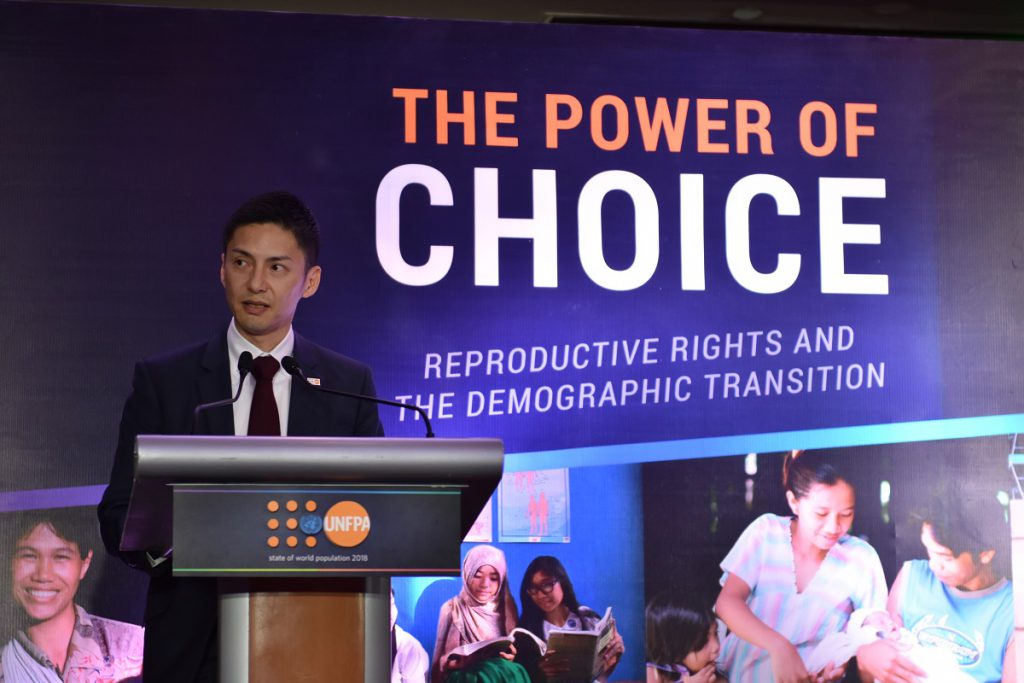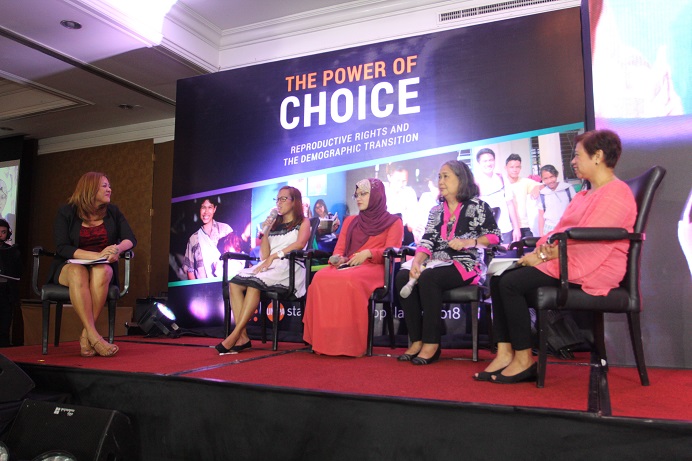State of World Population 2018: The power of choice
The power to choose the number, timing and spacing of children can bolster economic and social development.
Ensuring the reproductive rights to choose the family size, timing and spacing of children can improve the Philippines’ social development and economy, said United Nations Population Fund (UNFPA), the UN sexual and reproductive health agency as they launched the State of World Population (SWOP) Report 2018 entitled “The Power of Choice: Reproductive Rights and the Demographic Transition.”
Download Report : UNFPA State of World Population 2018
In partnership with the Commission on Population (POPCOM) and the Municipality of Tanay, Rizal, this year’s UNFPA SWOP report highlights the importance of giving women the power of choice when it comes to their reproductive rights.
The report shows that family size is closely linked with reproductive rights, which, in turn, are tied to many other rights, including the right to adequate health, education, and jobs.
The transition to a lower fertility in the Philippines has emerged through people claiming and realizing their right to make choices about their reproductive lives. UNFPA cited the 2017 National Demographic and Health Survey (NDHS) which says that the Total Fertility Rate (TFR) declined steadily from 4.1 children per Filipino woman in 1993 to 2.7 in 2017.
Although the TFR in the Philippines has been decreasing through the years, it is still one of the highest among the ASEAN countries. Its population is the second largest among ASEAN, and still counting.

According to the 2017 NDHS, 75 per cent of women aged 15-49 years wanted to plan their families to only have two children, while 60 per cent of the women wanted to stop having more children and 15 per cent said they wanted to postpone pregnancy.
The POPCOM Executive Director Dr. Juan Antonio A. Perez III stated in his opening remarks during the 2018 SWOP Report launching event that the drop in the TFR in the country is attributed to the increase in the use of modern family planning methods among e.g. currently married women. His concern however is high unmet need. NDHS findings show that 17 per cent of married women want to practice family planning but lack access to the methods.
“Millions of Filipinos would benefit from having the power to choose whether and when to have children, and how many children to have,” said Iori Kato, UNFPA Country Representative in the Philippines. “If you can plan your family, you can plan your life,” he added.
When a woman has the power and means to prevent or delay a pregnancy, for example, she has more control over her health and can enter or stay in the paid labour force and realize her full economic potential.
UNFPA also notes that many Filipino adolescents and youth have been left behind. Roughly one in ten women age 15-19 have begun childbearing, as the 2017 NDHS revealed. Moreover, while more than half of the population is 24 years of age or below, this corhort is by far the biggest working-age unemployed population group, according to the recent Labor Force Survey.
“For this youthful country to reap a demographic dividend for economic prosperity, there is an imminent need to invest more in health, education and employability of young people and on gender equality,” Kato highlighted.
Choice can be a reality everywhere

(From left to right) UNFPA held a panel discussion on reproductive rights moderated by TV Anchor Annalisa Burgos with Ibiden Philippines Labor Leader Janice Revilla, United Nations Youth Advisory Board Member Dr. Jasmine Diorka Suleik, Likhaan Center for Women’s Health Executive Director Dr. Junice Lirza D. Melgar, and Department of Education CSE Focal Person Dr. Rosalie Masilang.
The 2018 SWOP Report classifies all countries in the world according to their current level of fertility and stage of demographic transition. It then makes specific recommendations for policies and programs that would help each country increase reproductive choices and achieve sustainable development.
For the Philippines to reap a demographic dividend and achieve the countries development goals including the Agenda 2030 and Sustainable Development Goals, UNFPA suggested that the country accerelate its efforst to: (1) fulfill the commitment to reproductive rights, which have indeed been endorsed by Member States incluiding the Philippines decades ago e.g. in the 1994 Innternational Conference on Population and Development; (2) get to zero unmet need with nationally-owned and funded family planning programmes; (3) close disparities in reproductive health care services and integrate RH services in primary health care systems; (4) provide universal comprehensive sexuality education and age-appropriate reproductive health information and services to young people; and (5) achieve gender equality on all fronts through including eradication of gender based violence including child marriage and sexual harassment at the workplace.
In the Philippines, UNFPA looks forward to continued partnership with the government, civil society, private sector and all stakeholders through the newly approved 8th Country Programme for 2019-2023, in ensuring that all Filipinos, especially those furthest behind, have access to sexual and reproductive health information and services and thereby make choices on some of the most significant and intimate aspects of their lives.
The UNFPA Country Programme will continue to support the acceleration of universal access to quality reproductive health care, particularly modern contraceptives, as well as comprehensive sexuality education (CSE) in accordance with international standards. Technical assistance will also be provided towards dismantling those barriers—whether economic, social or institutional—that inhibit free and informed choice.
UNFPA State of World Popula… by on Scribd
